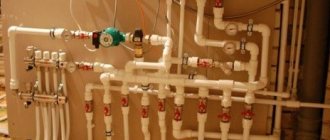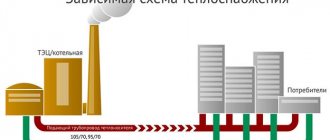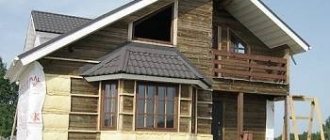Heat supply system (heat supply)
The first thing you need to pay attention to when selecting is the type of heating supply to the house.
The following thermal schemes are possible:
- From a centralized heat source - if you do not plan to travel far outside the city or are building within a cottage community, then you can use the existing heating network of a thermal power plant or boiler house, which provides heat to nearby houses.
- From a local heat source (autonomous heat supply) – heat supply comes from our own boiler house. This method is used if the heating network pipelines are located far away.
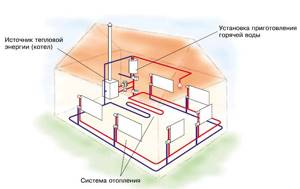
The main pros and cons of heat supply schemes.
| Heat supply | Advantages | Flaws |
| Centralized | No need for a boiler room (no costs for a boiler, pump, water heater), environmental friendliness | Dependence on the heat source, costs of laying the heating main |
| Autonomous | Switching on, switching off and regulating the system at will, independence from the seasonal operation of the thermal power plant/boiler house | You need a boiler room (all equipment in the boiler room), a chimney, a fuel warehouse, emissions into the atmosphere |
Despite all the advantages and priority of centralized heating, there are situations when autonomous heat supply is more profitable. This depends on the region and the type of fuel used.
I talk in more detail about heat supply systems in the video below.
Modern heating systems - new and traditional heating methods

The choice of heating method depends on the financial capabilities of the homeowner. Citizens with above-average incomes are more interested in modern heating systems and the latest energy-saving equipment. Rural residents with low incomes set the task differently: to economically heat an apartment or private house, incurring minimal installation costs.
Both groups of homeowners are united by a completely understandable desire - to pay less for utilities. There are also two options for solving the problem: use new technologies or quit/reduce consumption of expensive energy resources.
The influence of fuel on the choice of heating system
If your choice is in favor of your own boiler room, then you need to decide on the type of fuel for it. There are many different options; when choosing, take into account the climate and terrain of your region.
Electricity, beloved by many consumers, in some areas has such a price that when installing an electric boiler, the entire family budget will be spent on heating costs.
The use of gas as fuel in northern latitudes must be economically justified. In regions of the country where gas is delivered in a liquefied state, this type of fuel will have a very high cost.
The happy owners of their home in a region with natural gas pipelines passing nearby can not even hesitate, but take the technical conditions for gas supply to their site. An autonomous gas boiler room is the best option for you.
Wooden house in the forest? Then it is obvious that the most accessible fuel will be firewood. But if there is a fuel oil plant nearby, then it would be stupid not to take advantage of its availability.
There are several types of fuel used to produce thermal energy:
- Solid fuel - firewood, coal, peat briquettes, etc.
- Liquid fuel – fuel oil, diesel fuel, waste oil.
- Gaseous fuel – natural gas, liquefied gas.
- Electricity.
- An alternative source is solar panels, windmills, heat pumps.
To select the appropriate fuel, analyze and compare:
- fuel price in your region;
- the possibility of its continuous supply;
- the ability to organize a warehouse for storing reserve fuel (for solid and liquid fuel);
- analyze nearby production (for example, a wood processing plant, the waste of which can be used to heat a house);
- don't forget about comfort. Are you ready to work as a fireman every day;
- pay attention to environmental friendliness (for example, some types of fuel have a strong odor);
- talk to your future neighbors. What do they use and what disadvantages do they see;
- Analyze the table below and decide what would be cheaper for you to heat your house.
Fuel rating by cost.
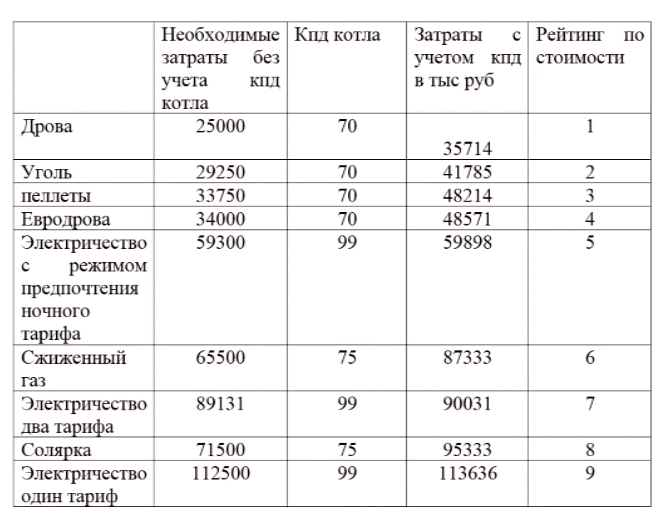
The data in the table is subject to change due to ongoing cost increases, but gives a clear idea of the fuel's price ranking.
The cost of heating from gas is 1.5 times more expensive than from solid fuel.
How cheaper it is to heat a building, and why the efficiency of a boiler is so important, see my video.
How to choose the right system
To make the right choice, you must consider :
- available fuel ;
- dimensions ;
- the material from which it is constructed;
- how often is it visited?.
For a brick house
Brick walls absorb and then retain heat. a fire occurring is low.
Therefore, it is better to use water or stove heating. The final choice depends on:
- gas supplied to the house ?
- prices for various types of fuel in a given area.
For wooden structure
It is unsafe to light a stove in such a dacha , since wood is a highly flammable material. In this case, it is better to stick to water heating. If the house is small and power , this will do.
Cottage heating methods
Having made your choice in favor of any fuel, you need to choose a boiler on which the heat in your country house depends. Let's consider the most popular and reliable systems, proven by many years of practice.
Heating using solid fuel boilers
This heating method is common in colder regions.
Advantages of the system:
- durability,
- cheapness,
- reliability,
- high efficiency of the boiler.
Disadvantages of the system:
- manual fuel filling;
- you cannot leave the system without constant supervision (you should always add fuel to the boiler so as not to defrost the system);
- availability of fuel storage.
Stove heating
In a small country house, it is enough to use a traditional stove. This heating method is suitable if you do not plan to live there in winter. But you need to understand that stove heating is not regulated. And for a quality warm-up you will have to sweat and wait.

In many village houses, stoves are still popular because of their simplicity and low cost. And if the village is located far from big cities, but close to the forest, and financial possibilities are small, then the decision to lay a stove will be the best.
This oven can also be used for cooking, which makes it versatile.
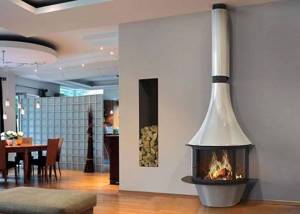
If you need to heat a small area, a fireplace is ideal. Crackling firewood and unusual decor will bring some romance and charm to your home.
Heating using liquid fuel boilers
This method is less common, but is a kind of alternative to gas heat supply. The most popular fuels in the system are diesel and waste.
Pros of the system:
- automation of work (the owner can leave the boiler room unattended for a long time);
- high efficiency of the boiler;
- reliability;
- high performance (suitable for very large houses, possibly with production).
Disadvantages of the system:
- expensive fuel;
- additional costs for fuel storage;
- escaping combustion products pollute the atmosphere (a specific odor may be present);
- dirty boiler room.
When choosing a boiler, find out about the complexity of maintenance and repair method. Sometimes it is worth buying a heating unit that is a little more expensive, thereby reducing the cost of its operation.
A liquid fuel boiler is very appropriate if gasification of the area is planned in the near future (that is, natural gas will be supplied to the village). Since you can choose a boiler that will be converted to gas in the future, and there will be no cost for a new boiler installation.
Gas heating
Is your site connected to a network gas pipeline? There is no doubt about the priority of gas heating.
This heating system:
- economical,
- there is no smell or soot when combustion products are released,
- fully automated,
- reliable,
- has a high boiler efficiency.
The disadvantages include:
- explosion hazard,
- dependence on the gas supply organization,
- fire hazard.
A gas boiler can operate both from gas cylinders and from a gas holder system, but then the heating will not be so economical. If your choice fell on this type of heating system, then figure out how to install a gas boiler.
Electrical heating
Many people love electric heating for the following advantages:
- simplicity,
- inexpensive equipment,
- no chimney,
- full automation,
- ease of use.
The main disadvantages are:
- high cost of electricity;
- the need for high power (not always existing electrical networks can provide the required “watts”).
I recommend installing an electric boiler not as the main one, but as a backup one.
Modern home heating systems are very diverse, and every year new options for non-traditional methods of heating a home appear. But to this day, such methods are found in isolated cases.
Boilers
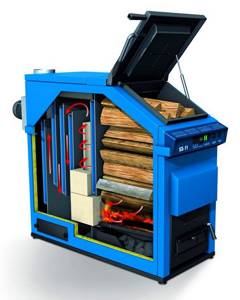
The central unit of any classical heating circuit is the boiler. The heat supply parameters largely depend on its functionality. Thus, modern electric boilers for heating a home can take up little space and still generate the optimal amount of thermal energy.
There are quite strict requirements for heating equipment of this type. It must be as safe as possible in operation, technical characteristics must comply with existing standards, and the controls must have a clear and intuitive interface.
Electric heating boilers
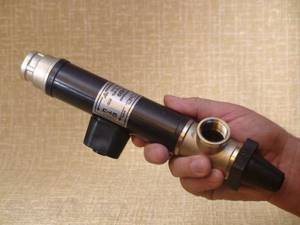
Installation of electric heating devices is relevant if the area of the room is relatively small or there is no main gas supply. In practice, to organize modern electric heating, you can use not only boilers of a classical design with a heating element, but also new models that have a different operating principle.
The operating principle of an electrode boiler is to create the movement of electrodes in a cathode-anode pair. This leads to heating of the water and increased pressure. As a result, coolant circulation occurs. Modern electrode-type heating boilers, in addition to the heating zone, have a control unit, and also provide the ability to connect to a programmer.

Operating principle of an induction boiler
To obtain more heat, you can install an induction boiler. It works on the principle of electromagnetic induction that occurs between the core and the winding. To ensure safety, the coil and core are completely isolated from contact with water.
These modern types of electric heating for a private home have several features. The main one is low inertia - water heats up very quickly. However, in addition to this, the following operating features must be taken into account:
- Current heating costs. Heating the coolant using electrical appliances is considered the most expensive;
- Purchase and installation of additional elements - expansion tank, circulation pump, safety group;
- Electrode boilers have special requirements for the coolant. It must contain a relatively large amount of salts to support the electrolysis reaction.
But despite these factors, electric heating has found widespread use in buildings without gas mains. Another advantage is the possibility of organizing separate air heating circuits in each room.
When installing electric boilers, installation of an RCD is required. It is also recommended to install a separate electrical wiring line.
Gas condensing heating boilers

One of the modern methods of heating a private home is the installation of gas condensing boilers. Externally, they are practically no different from traditional ones. The difference is the additional internal heat exchanger.
The essence of the innovative addition is the use of thermal energy from combustion products. The relatively complex internal chimney network reduces the temperature of the carbon monoxide to a dew point on an additional heat exchanger. It is connected to the heating return pipe. As a result, the water in it heats up due to the action of hot condensate.
According to the manufacturer, this modern heating device can have an efficiency above 100%. In practice, it reaches 99%, which is a record for heating cats. But to choose the right model, the following factors should be taken into account:
- The resulting condensate must not be discharged into the sewer system. It should be stored in an airtight container;
- For each boiler model of this type, there is a recommended operating temperature at which condensation forms on the surface of the secondary heat exchanger;
- High cost of equipment.
Since this modern method of heating a private home requires low-temperature operation, it is recommended to increase the area of radiators and radiators. This entails additional costs for the purchase of system components.
In low-temperature gas boilers, plastic chimneys can be used, since the degree of heating of carbon monoxide will be low - up to +60°C.
Long-burning solid fuel boilers
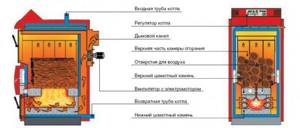
An alternative to modern stove heating of a private house are long-burning boilers. Unlike traditional models, heating of the coolant occurs not due to the combustion of fuel, but as a result of the ignition of wood or coal gases.
To do this, they limit the flow of air into the combustion chamber, which entails smoldering of the solid fuel. The released gases enter the afterburning zone through channels, where oxygen is pumped using a fan or turbine. As a result, the gas mixture ignites, releasing a large amount of thermal energy.
The advantages of this modern method of heating a private home are:
- Economical fuel consumption;
- Long working time on one load of wood or coal;
- Possibility of adjusting the degree of heating of the coolant using the intensity of the fan.
One of the disadvantages of this modern heating without electricity is the low temperature of carbon monoxide. This leads to the formation of condensation on the chimney pipe. Therefore, all long-burning boilers must be equipped with a thermally insulated chimney system.
The cost of all the heating boilers discussed above differs depending on the manufacturer and specific power.
| Name | Type | power, kWt | Cost, rub. |
| Stropuva | Long burning | 20 | 82890 |
| Baxi LUNA 3 | Condensation | 24 | 75800 |
| Vin | Induction | 3 | 17250 |
| Galan | Electrode | 9 | 9125 |
A feature of the operation of long-term combustion boilers is a large amount of soot in the combustion chamber and on the heat exchanger. Therefore, they need to be cleaned more often than classic models.
Heating system heating pipe
Heat transfer from an installed source is carried out through heat pipes. These include all pipes of the system. These include highways, risers, and connections to devices.

It is better to entrust the selection of equipment for boiler piping to specialists. Pumps, expansion tank, control valves, automation and distribution combs are important elements of the system, the incorrect selection of which leads to an inflated cost of heat during operation.
The same applies to an individual heating point (IHP), which will be in the house instead of a boiler room if the heat supply is centralized.
When selecting equipment, it is important to take into account the load on the hot water supply, as well as the facilities planned for the future. For example, a swimming pool, supply ventilation costs or a guest house.
Selection of coolant
Once a heat generator has been selected, you need to consider how this heat will be supplied to the heating devices. A coolant circulates inside the heat pipe, which can be:
- Liquid – water.
- Gaseous - air, steam, gas.
Water is used to heat country houses. Sometimes additives are added to it, the choice of which depends on the pipes and the outside temperature in winter. Gaseous coolant is usually needed for technical production.
Heating system diagrams
The next important step is to select a piping layout and connect heating devices to them. I recommend that you coordinate this section with the designers, since each system has its own characteristics and is selected individually for each home.
Single-pipe. The devices are connected to one pipe. The main advantage of the system is that it reduces pipe consumption by almost 2 times. And this significantly reduces the cost.
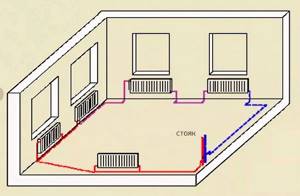
Two-pipe. Heating devices are connected to two pipes. It is believed that in this system the heat is distributed more evenly. The “two-pipe” is the easiest to adjust during installation, which is why it is most often offered by installation organizations.
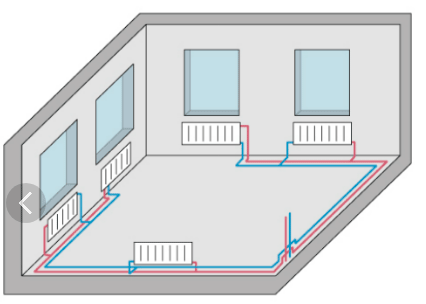
Radial. Each heating device is connected independently from a common collector. With this scheme, each device can be adjusted, and this reduces heating costs during operation. But, on the other hand, the cost of the system increases due to increased pipe consumption.

When comparing schemes, it is believed that single-pipe systems are more economical. With correct calculation and uniform load of risers, they have proven themselves well. Customers of entire microdistricts still prefer a single-pipe system.
Many installers of private houses insist on a two-pipe system. This is due to the fact that during startup and commissioning work, which is the responsibility of the installation organization, the “two-pipe” is easier to adjust. And if there are errors in the installation of the “one-pipe” during the startup process, problems will arise.
When choosing a scheme, you need to take into account the layout of the house, the presence of non-residential premises (gym, garage, swimming pool), the method of regulation and automation. Also compare options by cost. Pay special attention to the installation of water heating.
Warm floor system
This is an independent heating system consisting of pipelines laid in the floor structure. A warm floor can be an element of a heating system, i.e. it can partially extinguish heat loss.
It is often believed that a house can only be heated with underfloor heating. This opinion is wrong. Use this system as additional heating.
An independent heating circuit with a “warm floor” design will be sufficient for a small room without windows. For example, in the bathroom. Also, a good solution would be to use “warm floor” in zones. For example, in a large living room, in the kitchen area or near the sofa.
If the room has large stained glass windows, then heating only with “warm floors” cannot be used. Be sure to learn how to install heated floors.
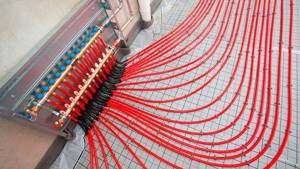
What pipes to use for heating
The selection of pipes for the heating system is an important part and largely depends on the temperature of the coolant and the heating scheme. It is also worth paying attention to the material of the pipes if you plan to install the pipelines yourself. Some types of pipes require special equipment.
For a country house you can use:
- Metal pipes (steel and copper) are classics that have been proven over the years. Many of my customers choose these pipes for their affordability, reliability, durability and good tightness.
- Plastic (polymer type PEX or PP) - these pipes are very popular now, but you need to be careful with them. There are many types of plastic and not all are suitable for heating. In pursuit of beauty, without understanding the subtleties, you can end up in an unpleasant situation.
- Metal-plastic pipes (combined) - these pipes are preferable for self-installation.
All types of pipes require high-quality installation, so I recommend choosing trusted specialists, since savings in this case can be costly during operation. Any network breakthrough means damaged repairs, furniture and nerves.
Incorrectly selected pipe diameters lead to disruption of the system as a whole. For high-quality selection, it is necessary to carry out a hydraulic calculation.
Wood stove for home heating
The principle of operation of a wood-burning stove is simple - when fuel burns, it releases heat. The walls heat up and give off heat to the air in the room. Stove heating, like any other, has its pros and cons.
Notable benefits of a wood stove include:
- a special cozy atmosphere that no other type of heating can create;
- relatively small financial investments;
- the ability to make it an original element of the interior;
- environmental friendliness, availability of fuel.
At the same time, the furnace takes up useful space and has low efficiency. The larger the house, the larger this heat source will be. Before heating the air in the room, you need to load firewood into the firebox, then repeat this procedure periodically.
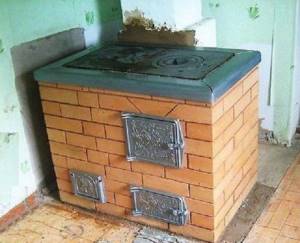
Such a small brick stove can heat a small room. You can cook food and heat water on its surface
It is necessary to wait until the fuel burns well and warms up the structure. Only after this ritual will the long-awaited warmth spread throughout the room.
Types of wood stoves
Traditional wood stoves are made of brick. The presence of serpentine chimneys in them allows you to heat the air in the room well and retain heat for a long time. It can be used as a fireplace and cook food on its surface.
There are 3 categories of brick kilns:
- With a stove or heating and cooking . They can heat several rooms at once, and also cook food on them.
- Russian . As a rule, this is a massive structure with an appendage in the form of a couch. On such a stove they not only cook various dishes, but also dry herbs, fruits, and mushrooms.
- Stove-fireplace . In addition to the heating function, this structure is designed to decorate the interior, bring to it a touch of romance and special home comfort.
Wood-burning stoves are also made from cast iron. They are compact, so they will fit into any corner of the house. Combustion products are usually removed through a corrugated chimney. Such stoves allow you to quickly warm up a room.
Heat-resistant steel stoves also quickly warm up the air in the house. But the comfortable temperature does not last long. Sometimes stainless steel is used to make metal wood-burning stoves. It retains heat longer, but the seams do not withstand rapid heating well and are often damaged.
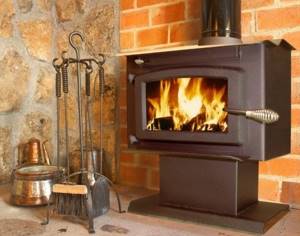
There are many different models of wood burning stoves. Manufacturers equip them with special devices that increase operating efficiency and reduce the amount of toxins in smoke
It is permissible to heat a country house with wood even without the obligatory construction of a stove in its direct sense. Pyrolysis boilers such as the Butakov or Buleryan furnace are often installed. The last option can be made with your own hands. Although here the fuel is wood, the principle of operation is different - similar to a gas generator.
Heat enters the room during post-burning. For this purpose, firewood is laid in large quantities. A mode is set in which only part of the wood burns, while the other part smolders. The duration of the process depends on the volume of the room and the power of the heating equipment. The efficiency of pyrolysis furnaces is quite high - from 75 to 85%.
Gas-generating furnaces also include the Strupov and Bubafonya furnaces, which operate without loading for up to 48 hours. Characteristic of these structures is the presence of a high column. Firewood is placed in it almost to the edge and set on fire, like a fire, from above.
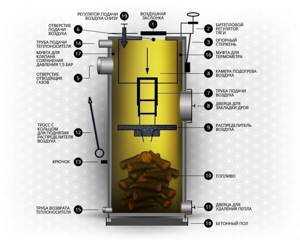
Instead of firewood, you can put sawdust, peat or another type of solid fuel into the stove. The denser it is laid, the longer the process will take.
Instead of firewood, you can put sawdust, peat or another type of solid fuel into the stove. The denser it is laid, the longer the process will take.
The combustion process is supported by air supplied through a telescopic pipe at the top of the stove. The fuel burns, and the combustion zone gradually descends, along with the pipe supplying air, to the level of the grate.
As an alternative to heating a country house with wood, there are other solid fuel options such as pellets. Compared to firewood, they burn longer. Pellet boilers in which they are burned are safer because... protected from overheating, equipped with flame control.
On one load the boiler can operate for at least 3 hours. If the system is supplemented with a heat accumulator, the heat will accumulate and then enter the room.
For a small country house, one stove is enough to heat it and cook food. If the house is large, you need a carefully thought-out heating system, where one stove heats the entire building. For this purpose, steam or water circuits are installed.
In a one-story house, the circuit is connected to an ordinary brick stove or to a purchased cast iron one. If the mansion has 2-3 floors, you need to purchase a cast iron stove-boiler.
Improving the characteristics of stove heating
The water circuit improves traditional stove heating by significantly increasing the heating area and rational heat distribution. The heating process includes both the furnace walls and smoke channels, as well as the coolant itself. Heat enters the radiators when the wood is burning, but the heat remains in them for some time.

In a house where they do not plan to live permanently, use non-freezing liquid instead of water
The inclusion of a conventional wood stove in a water heating system requires the presence of a heat exchanger. Its purpose is to warm up the water and ensure the circulation of the coolant.
The heat exchanger is made from sheet steel or metal pipes. Its sizes are individual. The main thing is that when installing, leave a gap of 10 - 15 mm between the register and the walls of the furnace, taking into account expansion.
If there is a second floor in the house, an electric pump is included in the system. It circulates the coolant more intensively, accelerating the heating process when lighting the stove. The system can also include a container to create a supply of hot water.
Heating devices
The last, but no less important step in selecting a system is the choice of heating devices. Modern manufacturers do everything they can to lure potential customers. This is price, design and a wide range of choice.
Radiators are:
- cast iron,
- aluminum,
- steel,
- bimetallic.
When choosing a battery, pay special attention to the parameters of your system: pressure in the pipes, quality of the coolant, method of connection to the pipe (depending on the selected heating scheme) and environmental friendliness of the device.
Be sure to check with the seller for certificates for their products. You can often read on forums about purchasing low-quality devices. The design organization will help to correctly calculate the number of sections for the device or their marking. I advise you not to skimp on this calculation.
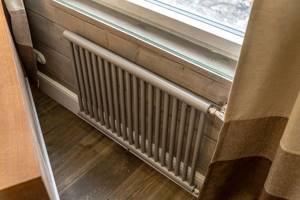
I often have to recalculate devices selected “by eye”. Calculation and adjustment of the existing scheme are more expensive, not to mention spending money on dismantling equipment. And I’m not even talking about the need for repairs after installing new equipment.
Remember that in most cases, the “special” advantages of a radiator are a marketing ploy.
If you are planning automated control of the system, then pay attention to heating devices with built-in thermostat valves. This will help reduce costs a little. Smart heating not only saves money, but also takes care of maintaining the temperature at a given level.
Energy consumption of electrical systems
How to save on heating your home with electricity? Economical heating with electric systems is still possible, despite high tariffs. To do this, the following conditions must be met:
- thorough thermal insulation of the building, including walls, floors, roofing;
- installation of modern metal-plastic windows;
- connecting heaters to a computerized control system.
The control system regulates the power of the heaters in each room based on the temperature indoors and outdoors, the dynamics of its changes, the strength and direction of the wind. This avoids overheating and unproductive costs.
Efficient heating will also help ensure system programming. The program will lower the temperature in rooms while residents are away and warm up the building before they return. The smart home system makes it possible to control heating remotely.
Heating a private house using the brine-water type using a heat pump
To implement such a project, a much deeper well will be required; its depth must be at least 200 meters. The pipes in the well should be arranged in a U shape.
Remote control of heating of a country house
It is also possible to equip such methods of heating a country house with a heat exchanger, which must be installed at a depth of at least 5 meters. Such a heat exchanger is needed in order to reduce the difference in heat received in different months.


